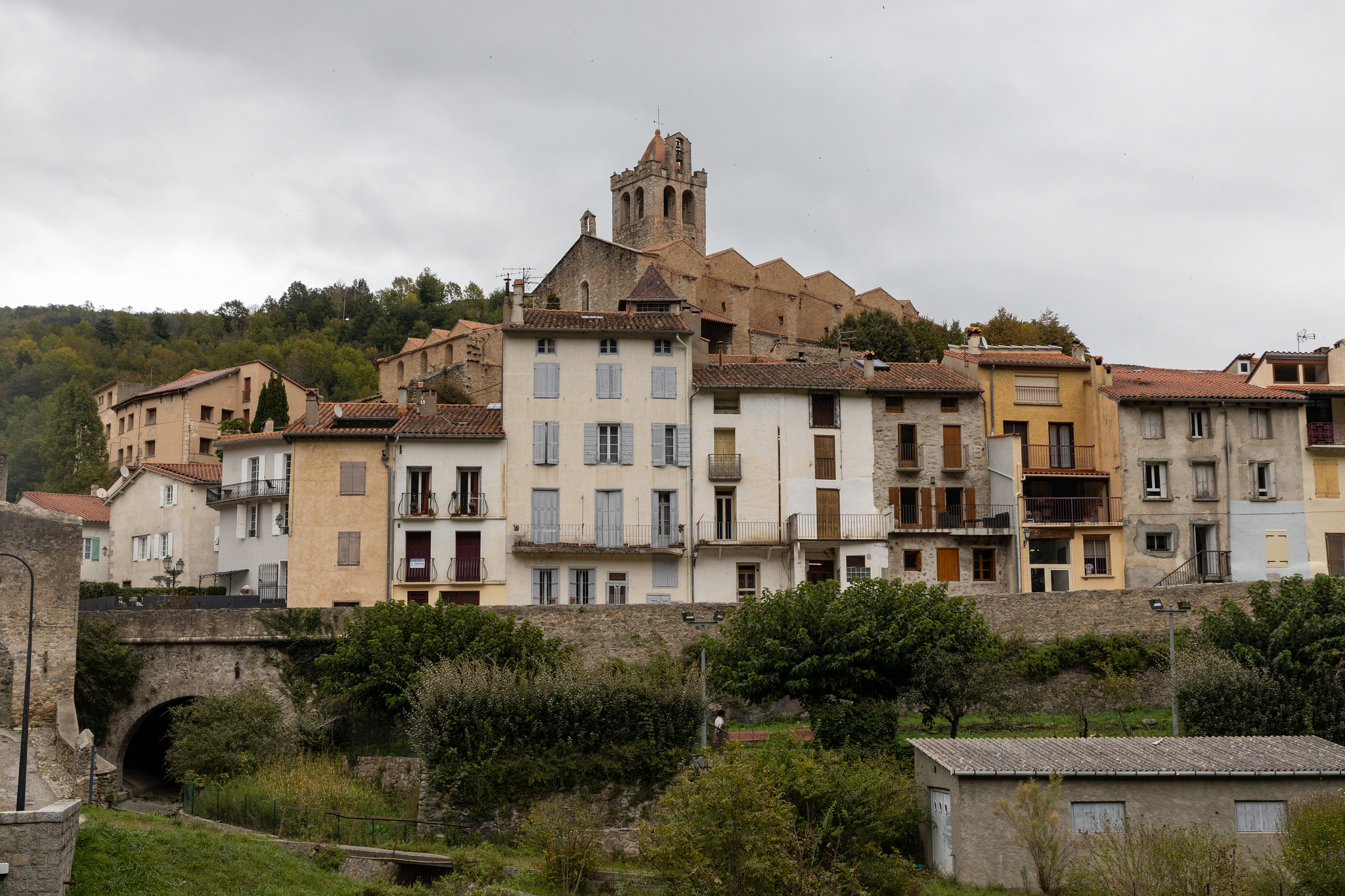Date and Time (Original) – 2024:10:02 10:33:58
In autumn 2024, I embarked on a journey through France’s most beautiful villages. After visiting the third village, Bormes-les-Mimosas, I took a short break before traveling from the Côte d’Azur to the Midi-Pyrénées region. This time, I visited the village of Prats-de-Mollo-la-Preste.
To reach the village, I drove along the A9 motorway that runs parallel to the Mediterranean, heading towards the Spanish border. After passing Perpignan, I exited the motorway about 10 minutes before the border and took mountain roads the rest of the way. While I expected the narrowness, curves, and steep gradients typical of Pyrenean roads, they turned out to be more manageable than anticipated. On the way, I encountered many cyclists, most of whom were not professional athletes, tackling the gentle slopes. Driving in rural Europe often requires extra care due to the frequent presence of cyclists.
The day before visiting the village, I stayed overnight in a seaside town near Montpellier, approximately 200 km away. I left around 8 a.m. and arrived at the village in about two hours without taking any breaks. Surrounded by fortified walls, the village had no designated tourist parking, but I managed to park near the town hall without any issues.
I marveled at the idea of a village existing in such a remote location. As it turns out, Prats-de-Mollo-la-Preste was designed as a fortress by Vauban. The Pyrénées-Orientales region is home to several fortified towns designed by him. Another example is Villefranche-de-Conflent, a village I first visited in April 2010 during my initial journey to explore France’s most beautiful villages. On the same day, while heading to my next destination, I passed through Villefranche-de-Conflent again. If time had permitted, I would have stopped to visit once more.
The village of Prats-de-Mollo-la-Preste is quite small, and sightseeing took only about 30 minutes. The church at the highest point of the village was especially charming, though it was closed during my visit. There was also a fortress on a hill about a 10-minute walk from the village, but I couldn’t visit it due to timing.
At one point, I needed a restroom but couldn’t find a public one, so I used a café in the central square. While public restrooms in Europe have become more accessible in recent years, many rural areas still lack them. Fortunately, almost every town has a small café where you can use the facilities for the price of a coffee—about 2 euros—a reasonable trade-off.
For a detailed description of the village, please refer to the information below.
Prats-de-Mollo-la-Preste: Overview
Prats-de-Mollo-la-Preste is a charming medieval village nestled in the Pyrenees-Orientales department in southern France, close to the Spanish border. Renowned for its stunning landscapes, rich history, and well-preserved architecture, the village is classified among “Les Plus Beaux Villages de France” (The Most Beautiful Villages of France). It boasts a unique blend of Catalan and French cultures, offering a picturesque setting with cobbled streets, ancient fortifications, and vibrant festivals.
Key Features of Prats-de-Mollo-la-Preste
- Historical Fortifications
- The village is home to Fort Lagarde, a 17th-century fortress designed by Vauban. It overlooks the village and was strategically built to defend against invasions.
- Thermal Springs
- Located in the La Preste area, Prats-de-Mollo is famous for its therapeutic thermal waters, attracting visitors seeking relaxation and health treatments.
- Traditional Architecture
- The village features a labyrinth of stone houses, narrow alleyways, and old-fashioned arcades, reflecting its medieval heritage.
- Cultural Heritage
- The annual Bear Festival (Fête de l’Ours) celebrates Catalan folklore with vibrant parades, music, and traditional costumes.
- Natural Surroundings
- Surrounded by the Pyrenees mountains, the area offers excellent opportunities for hiking, nature walks, and wildlife spotting, with views of pristine valleys and forests.
- Proximity to Spain
- Located just a short distance from the Spanish border, the village serves as a cultural and geographical bridge, enriching its unique character.
- Religious Landmarks
- The Saintes Juste et Ruffine Church stands out with its Baroque-style interior and an intricately carved altarpiece.
Prats-de-Mollo-la-Preste encapsulates the beauty of medieval history and natural splendor, making it a must-visit destination in southern France.








